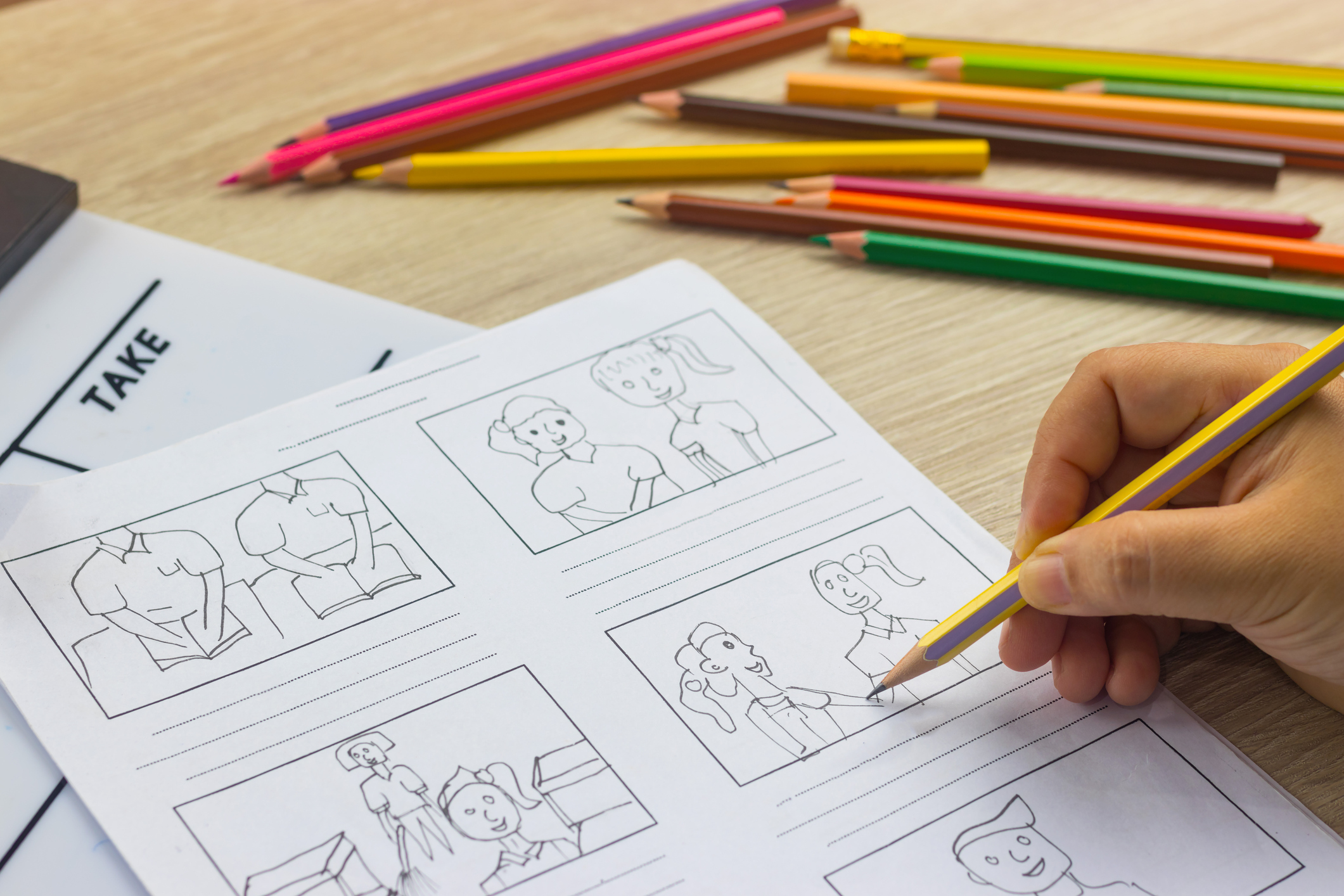
Storyboarding is often seen as a planning tool—a way to visualize a sequence of events before they unfold. Whether in design, video production, or writing, the purpose of a storyboard is to map out a process step by step. But what if we flipped that idea? What if, instead of only looking forward, we used storyboarding as a reflection tool—a way to look back on the journey of learning?
In Project Based Learning (PBL), where projects unfold over weeks or even months, students can sometimes lose sight of key moments. Storyboarding offers a structured way to pause, reflect, and capture their evolving thoughts, making learning more visible in a tangible artifact. More than just a written reflection, it encourages students to process their experiences through drawing.
This connects to the power of documentation—an essential practice in both PBL and approaches like Reggio Emilia. Documentation isn’t just about keeping a record; it helps students track their own learning journeys, revisit their thinking, and deepen their understanding. By making learning visible, we reinforce the idea that knowledge isn’t simply acquired—it’s built over time through inquiry, collaboration, and reflection.
How Storyboarding Can Enhance Reflection
Storyboarding offers several benefits as a reflection tool:
- Taps into Multiple Modalities for Learning—Combines visual storytelling with written reflection.
- Captures Growth Over Time—Helps students identify their evolving thoughts and skills across project phases.
- Encourages Deeper Reflection—Creates the habit of slowing down to process learning, ask deeper questions, and explore key moments.
- Creates a Tangible Learning Artifact—Serves as a powerful portfolio piece showcasing their learning journey.
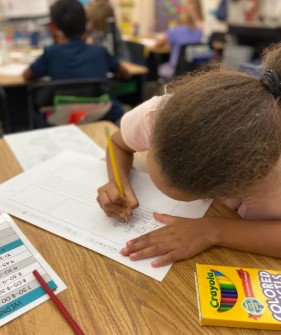 Unlike a one-time reflection at the end of a project, storyboarding can be an ongoing process. Students can revisit their storyboard at different points in the project, adding a new panel after each project phase to capture their evolving understanding. Alternatively, teachers can set a routine, such as pausing every few class sessions for students to reflect and contribute to their storyboard. This approach allows them to track their learning in real time, making connections between different stages of the project and deepening their reflection over time.
Unlike a one-time reflection at the end of a project, storyboarding can be an ongoing process. Students can revisit their storyboard at different points in the project, adding a new panel after each project phase to capture their evolving understanding. Alternatively, teachers can set a routine, such as pausing every few class sessions for students to reflect and contribute to their storyboard. This approach allows them to track their learning in real time, making connections between different stages of the project and deepening their reflection over time.
Two Approaches to Storyboarding for Reflection
There are multiple ways to use storyboarding as a reflection tool, but two particularly effective approaches include:
- Storyboarding Success Skills— Students reflect on how they developed key skills that help them thrive beyond the classroom, such as critical thinking, collaboration, and creativity.
- Storyboarding Content & Discoveries — Students track their biggest learning moments, pinpointing key discoveries, expert insights, and knowledge that shaped their thinking.
Both approaches help students make their learning visible and meaningful, allowing them to process their experiences in different ways.

Approach 1: Storyboarding Through the Lens of Success Skills
This approach helps students recognize their growth in essential competencies beyond academic content. By mapping out key moments when they exercised these skills, students gain self-awareness of their learning progress.
Identifying Success Skills to Track
Students can reflect on a Profile of a Graduate or common Success Skills—such as those established by your school or district—which outline the skills and competencies students should have upon graduation, extending beyond academic benchmarks, such as:
- Critical Thinking— Solving problems, analyzing information, making decisions
- Collaboration — Working with others, sharing ideas, managing group dynamics
- Communication — Expressing ideas clearly, listening actively, presenting work
- Creativity — Generating new ideas, thinking outside the box, designing solutions
Mapping Success Skills to Moments in the Project
Students identify specific moments throughout the project when they applied these skills.
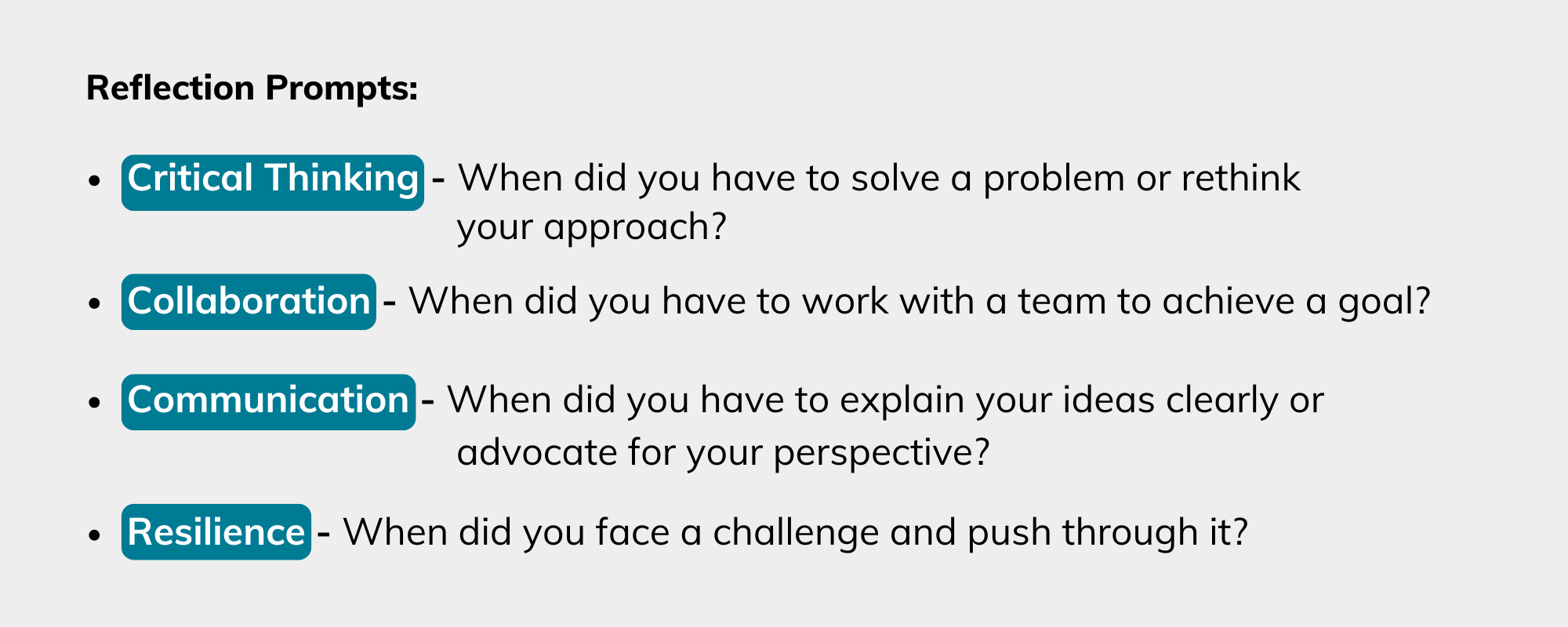
Creating the Success Skills Storyboard
Students illustrate key moments when they demonstrated these skills. They can combine visuals with brief written reflections to explain what they learned.
By the end of the project, students not only recognize their growth but also see how these skills apply to future challenges.
Approach 2: Storyboarding Content & Key Discoveries
This approach shifts the focus to what students learned throughout the project. Instead of emphasizing skills, students track key moments of discovery, expert insights, and new knowledge that reshaped their thinking.
Identifying Moments of Learning & Discovery
Students reflect on key moments when they had a breakthrough, learned something surprising, or gained a deeper understanding.
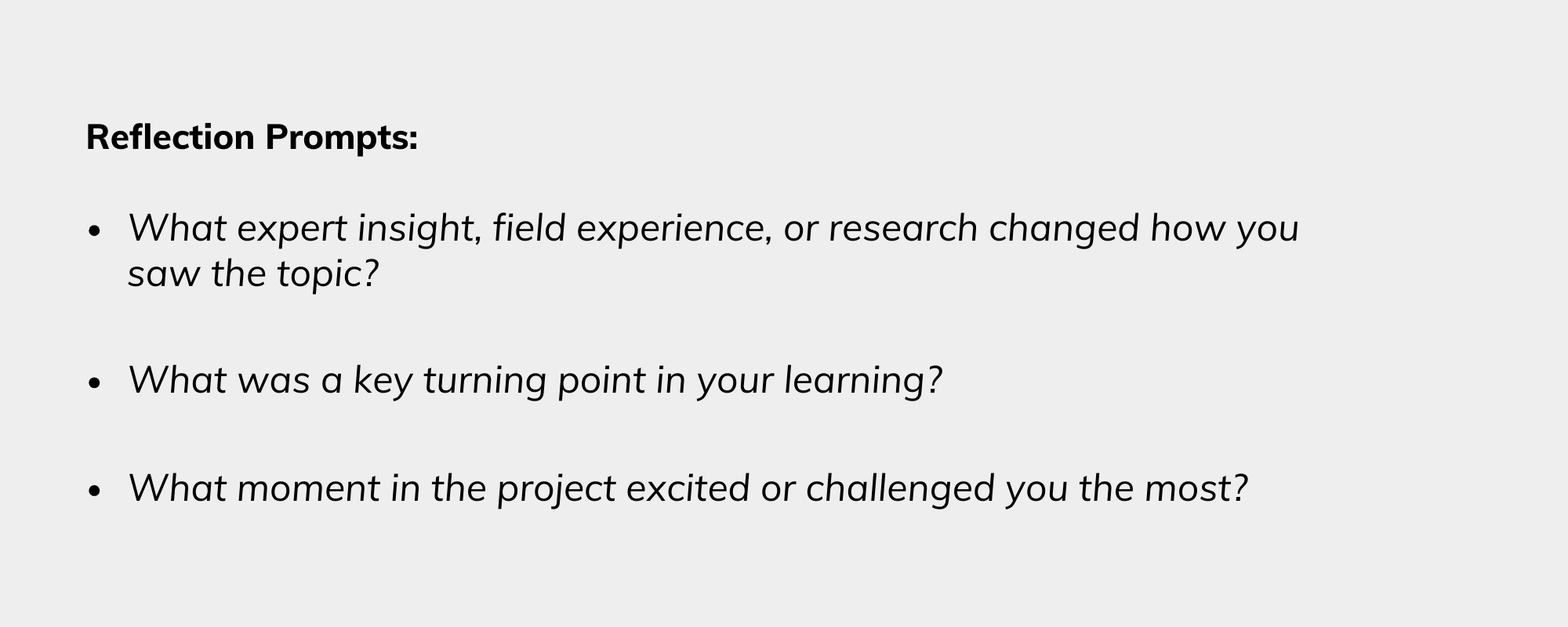
Creating the Learning & Discovery Storyboard
Students illustrate three to five key learning moments throughout the project. Examples might include:
- A conversation with an expert that shifted their thinking
- A challenge in their research or prototype that led to a deeper understanding
- A surprising discovery that changed their perspective
By capturing these key learning moments visually, students reinforce their understanding and create a reflection that makes their learning journey tangible.
What might this look like?
The example below illustrates how a student might engage in meaningful, structured storyboard reflection throughout a project. In this case, the project explores how translation influences the viewing experience. Initially, the student struggles to identify patterns in translation, feeling frustrated by inconsistencies. To push their thinking forward, they design a survey to examine how cultural context shapes meaning. Later, a visit from an expert in the field offers new insight into the technical precision of subtitles. The student captures these moments through storyboarding, demonstrating how reflection can be timely, intentional, and seamlessly woven into the learning process.
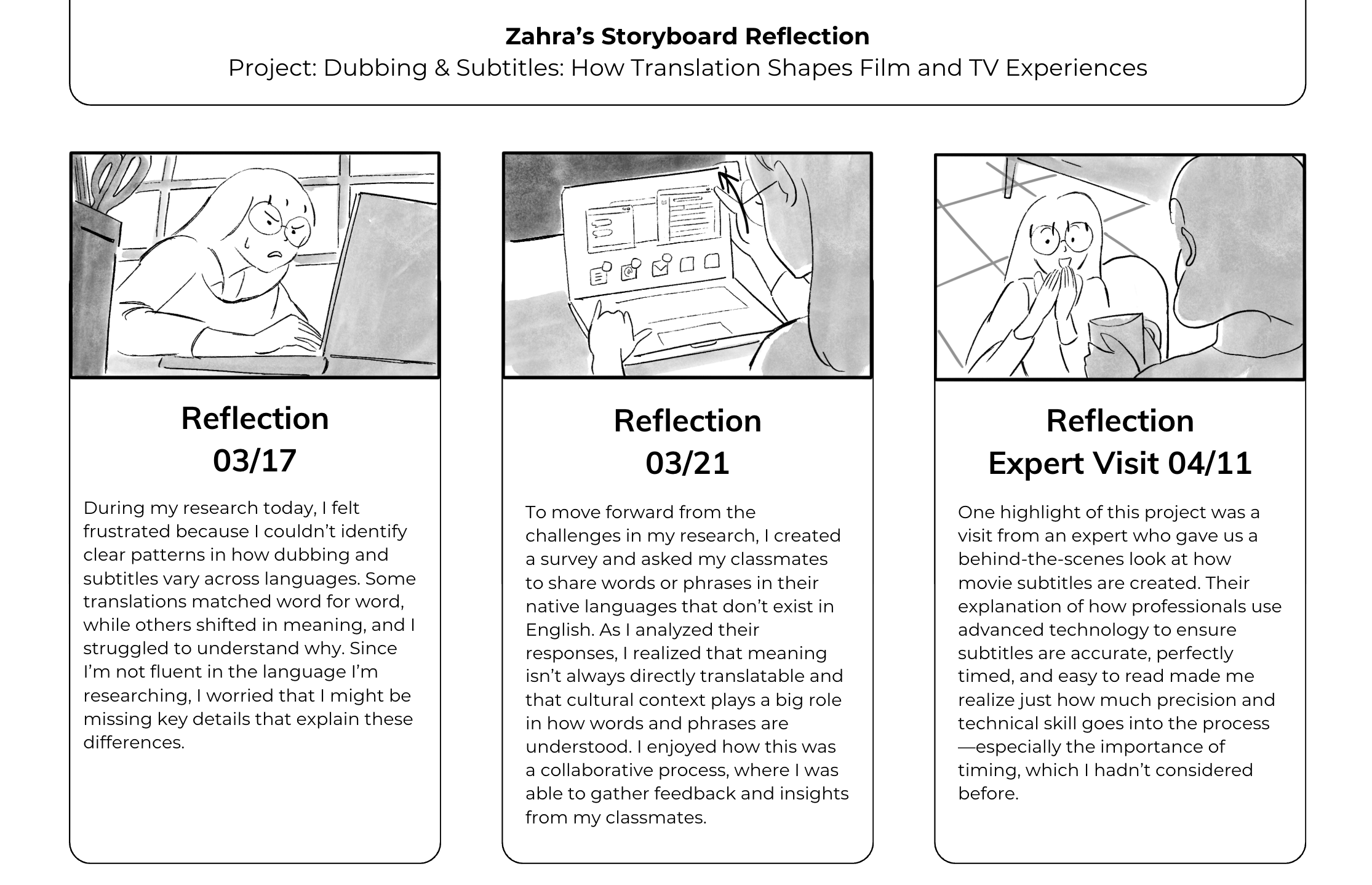
A Window Into Collective Learning Journeys
Some students may struggle to express their thoughts verbally or in writing when reflecting on growth, challenges, or key discoveries. However, starting with a drawing, a sequence of events, or even a few key words allows them to process their experiences visually, making it easier to translate their reflections into writing. Research suggests that sketching enhances comprehension and retention by activating different cognitive processes than writing alone. According to an Edutopia article on drawing and deeper learning, visualizing ideas/experiences through sketching helps students engage more deeply with content, make abstract concepts more concrete, and strengthen memory recall, ultimately leading to more meaningful reflections (Terada 2019).
For educators, storyboarding offers a powerful window into each student's learning path. As Tiziana Filippini, a senior pedagogista for Reggio Emilia preschools, shares in Visible Learners, documentation serves as "the memory of the group." By displaying these reflection storyboards in the classroom, educators make the full range of student experiences visible. The beauty of this process lies in how each student’s journey is uniquely represented—some may highlight struggles they overcame, while others capture breakthrough moments or unexpected discoveries. These visual narratives not only reveal how students approached challenges and what stood out to them but also make their evolving thinking tangible. In this way, reflection becomes a meaningful, visible celebration of growth.
Beyond the classroom, reflection storyboards can be powerful artifacts for student showcases or open-house events, where students share their learning journeys with a broader audience. Whether presenting to parents or community members, these storyboards offer a compelling way for students to articulate their growth and challenges. This process fosters a sense of empowerment and strengthens connections with their families and community. It also invites the audience to ask questions and engage in meaningful dialogue.
References
- Terada, Y. (2019, March 14). The Science of Drawing and Memory. Edutopia. https://www.edutopia.org/article/science-drawing-and-memory/
- Krechevsky, M., Mardell, B., Rivard, M., & Wilson, D. (2013). Visible learners: Promoting Reggio-Inspired Approaches in All schools. Jossey-Bass. Project Zero. (n.d.).
- Getting started with documentation, Part I: Making a plan to document. Harvard Graduate School of Education. https://pz.harvard.edu/sites/default/files/CCI%20Documentation_Part%20I.pdf

